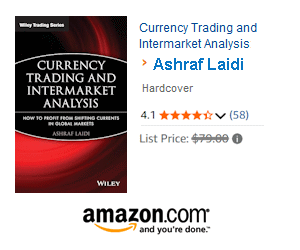What’s Priced in for the ECB?
We have been getting questions about exactly what's priced in for the ECB and it's not as straight-forward as it might seem. The euro dipped back to 1.1000 on Wednesday ahead of the decision and eurozone bond yields ticked lower. Along with the ECB decision also comes a key US CPI report. A new Premium trade has just been issued with 2 supporting charts & detailed notes.
There are five main moving parts to the ECB decision and that's what makes it so tricky. Let's break them down one-by-one.
1) Deposit rate
The headlines from the decision will be what happened to deposit rate, which is currently at -0.40%. The consensus is a 0.10% cut to -0.50% but it's far from assured. The OIS market is pricing in 14 bps of easing, which equates to a 40% chance of a 20 bps cut.2) QE
This is a major wild card. The consensus of economists is for a new 30 billion per month bond buying program. However as series of speakers and 'sources' reports – including one last week from MNI – suggest that bond buys may be reserved in case of deeper economic problems. If that's the case, it might be signaled for October but the market reaction will depend on how clear that signal is.3) Forward guidance
The current guidance from the ECB is to keep rates at or below current levels at least through H1 2020. The consensus is for something like 'through mid-2020' but policymakers may find it easy to push that even further, especially if QE is left out.4) Tiering
Eurozone banks are struggling and one of the reasons why is that negative deposit rates and a flat yield curve crush net-interest margins. Tiering (expempting banks with particular reserves from negative rates) could alleviate the problem but it could also complicate it, creating winners and losers among banks. On Wednesday, Dutch parliament passed a motion against tiering in a sign of how difficult it will be to find a consensus. Economists expect some help for banks here but it's a wild card.5) Verbal guidance
Even with all the moving mechanical parts, the press conference may be what determines the market reaction. Both the market and the central bank are pivoting towards a reliance on fiscal policy for euro direction. Draghi has emphasized this point since he started as President but we're fast approaching the time when the ECB is tapped out. Draghi may choose this moment to draw a line in the sand and say to governments with a more forceful tone that it's time to step up.With all these considerations, handicapping the euro is difficult. Ultimately, we think right now that growth matters far more than the level of rates or miniscule changes in policy. The framework for viewing the decision may ultimately come down to how much confidence the central bank inspires that it can generate growth itself, or prod governments into doing more.
Latest IMTs
-
30 yrs of Gold under 4 Minutes
by Ashraf Laidi | Dec 13, 2025 12:29
-
AAOI & the Fed
by Ashraf Laidi | Dec 11, 2025 19:22
-
3 Qstns for Today's Fed Meeting
by Ashraf Laidi | Dec 10, 2025 15:40
-
5 Stocks Worked for me Best in 2025
by Ashraf Laidi | Dec 5, 2025 14:42
-
Silver 150 Highly Plausible
by Ashraf Laidi | Dec 4, 2025 11:19







